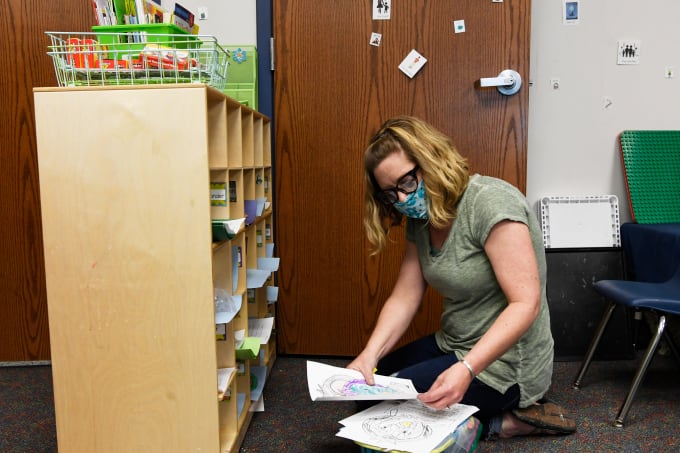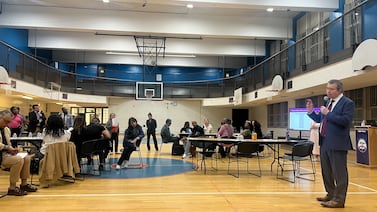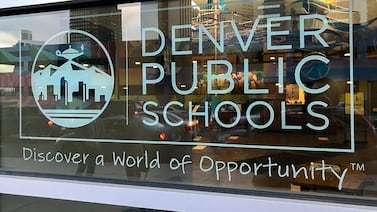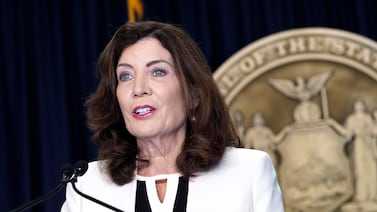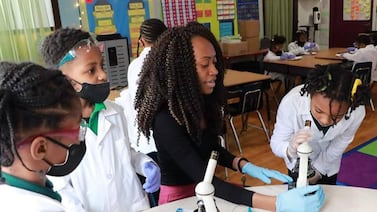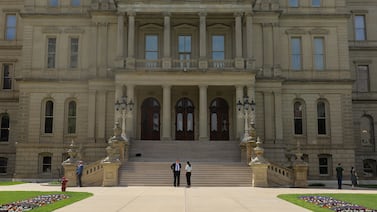Colorado elementary schools can open with normal class sizes under new state guidance that emphasizes local flexibility and a “layered” approach to safety that doesn’t depend on strict social distancing.
The guidance, issued Monday by the Colorado Department of Education and the Colorado Department of Public Health and Environment, calls on schools to use a combination of masks, home health screenings, proper ventilation, and the creation of cohorts — groups of students and adults that only interact with each other — to open safely while the coronavirus continues to circulate in the community.
While schools should try to allow space for people to spread out, including holding classes outside where feasible, the guidance does not recommend schools maintain 6 feet of distance among younger children — 3 feet is acceptable. The guidance says that older students, who are more likely to transmit the disease to others and to suffer health complications themselves, should maintain more distance, with any caps on class size dependent on the size of rooms.
“We know that we won’t be able to eliminate all risk, and we’re honest about that,” said Katy Anthes, Colorado’s education commissioner. “We hope with layered risk protections, we can have a safe environment.”
The new guidance comes as Colorado sees rising numbers of COVID cases. Many school districts have pushed back the start of the school year to allow for more planning time, and on Friday, Denver Public Schools, the state’s largest district, announced it would start the school year remotely. The earliest Denver students could be in the classroom would be Sept. 8, but that depends on the overall public health situation, officials said.
On Monday, the teachers union in Jeffco Public Schools, the second-largest district, also called for a remote start to the school year.
On social media, many teachers responded to the new guidance with anger and frustration. They said they felt like their safety is being disregarded in a rush to bring children back to school and noted that other workplaces have to follow stricter rules.
“During a time when the state is seeing an increase in COVID-19 cases, the guidance issued today by the Colorado Department of Education and the Colorado Department of Public Health and Environment does little to address the valid concerns raised by educators faced with the decision to return to school in the fall,” Amie Baca-Oehlert, president of the Colorado Education Association, the state’s largest teachers union, said in a statement.
The state guidance is not binding on school districts. The ultimate decision on whether, how, and when to reopen school buildings lies with districts and local public health agencies, the state said.
The new guidance lays out different recommendations based on public health conditions. Colorado was previously in “stay at home” and is currently under “safer at home,” a phase that allows many businesses to operate with some restrictions on capacity. Counties that show consistently declining case counts and meet other health conditions could move to a third phase, “protect our neighbors.”
Regardless of what phase a county is in, the state last week required masks for all adults in schools and for children 11 and older, while encouraging face coverings for younger children. Colorado also encourages districts to have students and staff do a health screening at home or upon arrival. That screening should include a temperature check as well as screening for other symptoms, such as loss of taste or smell.
State officials said their goals include: maximizing in-person learning, minimizing disruption, creating equitable opportunities, and allowing for flexibility and different regional approaches.
In one sense, the new guidance conforms to the plans already announced by many school districts.
Earlier guidance released in May called for a 10-person cap on classes. However, Gov. Jared Polis soon afterward told superintendents and charter leaders they should plan for classes of 20 to 25 students and open their buildings to meet the needs of working parents. And many parents also called for a more normal return to school.
On that basis, many districts shifted from a hybrid approach to planning to hold classes five days a week with relatively normal class sizes this fall. Many Colorado school districts traditionally start in early to mid August, just a few weeks from now.
But as cases have increased in recent weeks, so have concerns from some parents and even more teachers. A new large study out of South Korea finds that children older than 10 spread the virus as easily as do adults. Many pediatricians and public health officials have said the risks to children of staying home are greater than of going to school, but there remain ongoing questions about how opening schools might affect rates in the community and whether children with seemingly mild cases might suffer longer-lasting health impacts.
Brian Erly, a medical epidemiologist with the Colorado Department of Public Health and Environment, said the plan doesn’t require 6 feet of separation in classrooms because “nothing magical happens between 5 and 7 feet.” It’s more important for adults to keep distance than for children, he said.
State health officials instead emphasized that by creating distinct cohorts within schools, officials could limit the spread of the virus. They cited the example of outbreaks at two child care centers — one that kept groups separate and had to send home 11 students and staff and another that didn’t and had to send home 70 people to get testing and wait for symptoms.
But Denver’s decision not to open school buildings was driven in part by its inability to create cohorts smaller than 60 at the elementary level and 120 at the secondary level and still provide all the services and learning opportunities that students, including those requiring special education and English language development, need under the law.
Public health officials balked at the plan, Denver Superintendent Susana Cordova said Friday. On Monday, Bill Burman, the head of Denver Public Health, said in an email that such large cohorts would lead to significant disruption of the school day when students inevitably have to quarantine.
Asked whether it was realistic to expect districts, especially the larger ones that serve most Colorado students, to create small cohorts, state education officials referred to a scheduling toolkit on their website and acknowledged the school day would have to look different. They did not provide a specific number of students that should be in a cohort.
The guidance anticipates that remote or online instruction will continue for many students, whether because families choose it or because a classroom has a known COVID exposure. State officials are still working out exactly who would have to quarantine under what circumstances.
Under current “safer at home” guidelines, districts can also choose to continue remote learning for all students “if best for your community.”
If virus cases spike and Colorado reverts to a “stay at home” order, the guidance suggests schools move to remote learning with “a limited number” of students with specific needs doing in-person learning.
The guidance limits the number of high school students who can be brought together in person under the most restrictive phase.
“Since students in grade 9-12 transmit the virus like young adults, limit size to no more than 10 in a cohort, including the teacher and students,” the guidance says.
But for elementary and middle school students, the guidance doesn’t specify a cohort size.
If virus cases decline and counties move to “protect our neighbors,” the guidance says normal class sizes could occur in elementary, middle, and high schools, with attention paid to “maximizing spacing” between people in middle and high schools.
Read the complete guidance here.
Melanie Asmar, Yesenia Robles, and Ann Schimke contributed.


